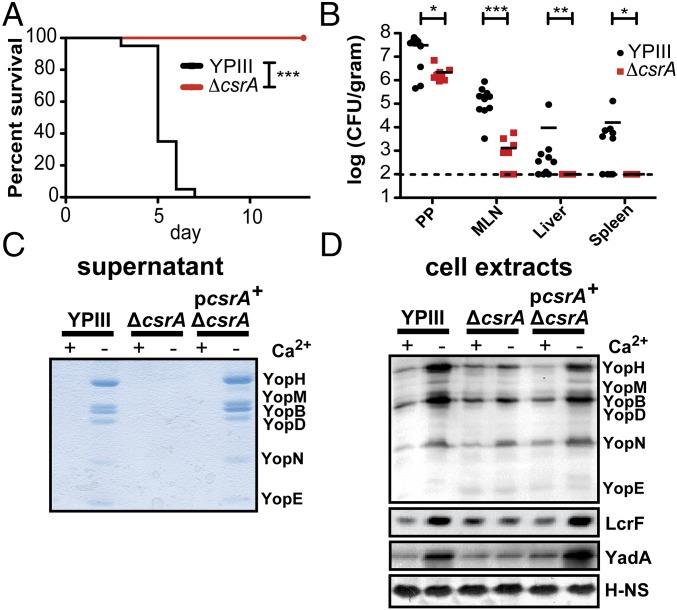Fig. 6.
CsrA is crucial for virulence and mediates expression of T3SS. (A) Mice were orally infected with 2 × 108 cfu Y. pseudotuberculosis WT strain YPIII or the isogenic ΔcsrA strain. Survival of mice was monitored for 12 d in two independent experiments with 2 × 10 mice per group for each genotype. ***P ≤ 0.001; log rank (Mantel–Cox) test. (B) BALB/c mice were orally infected with 107 cfu Y. pseudotuberculosis YPIII WT or the isogenic ΔcsrA strain. Mice were killed 3 d postinfection, and the numbers of bacteria in homogenized Peyer’s patches (PPs), mesenteric lymph nodes (MLNs), liver, and spleen was determined. Data from two independent experiments (2 × 5 mice per group) are presented. Statistical significances between the WT and mutants were determined by a Mann–Whitney test. The detection limit is indicated by the dotted line. *P ≤ 0.05; **P ≤ 0.01; ***P ≤ 0.001. (C) TCA-precipitated supernatants or (D) Western blots of whole-cell extracts of Y. pseudotuberculosis YPIII WT and the isogenic ΔcsrA strain with and without the complementing csrA+ plasmid pAKH56 grown at 37 °C in the absence of Ca2+ are shown. Yops, LcrF, and YadA identified by (C) Coomassie blue staining or (D) Western blotting are indicated. The nucleoid-associated protein H-NS was used as loading control.

